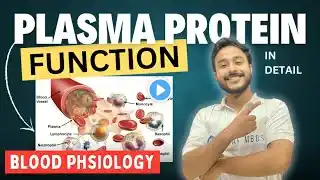
Blood Physiology (Blood Composition and Function) Part 1
Blood Composition | MedClarity Blood is a vital fluid that circulates throughout the body, delivering oxygen and nutrients while removing waste products. It consists of four main components: Plasma (55%) – The liquid portion of blood, mainly composed of water, proteins, hormones, and waste products. It helps transport nutrients, hormones, and waste. Red Blood Cells (RBCs, 45%) – Also known as erythrocytes, they contain hemoglobin, which binds to oxygen and carries it to tissues while removing carbon dioxide. White Blood Cells (WBCs, – These immune cells defend the body against infections and foreign invaders. There are different types, including neutrophils, lymphocytes, and monocytes. Platelets – Also called thrombocytes, they help in blood clotting and wound healing. Blood plays a crucial role in immunity, oxygen transport, and maintaining homeostasis. 📌 Subscribe to MedClarity for clear and concise medical lectures!


















